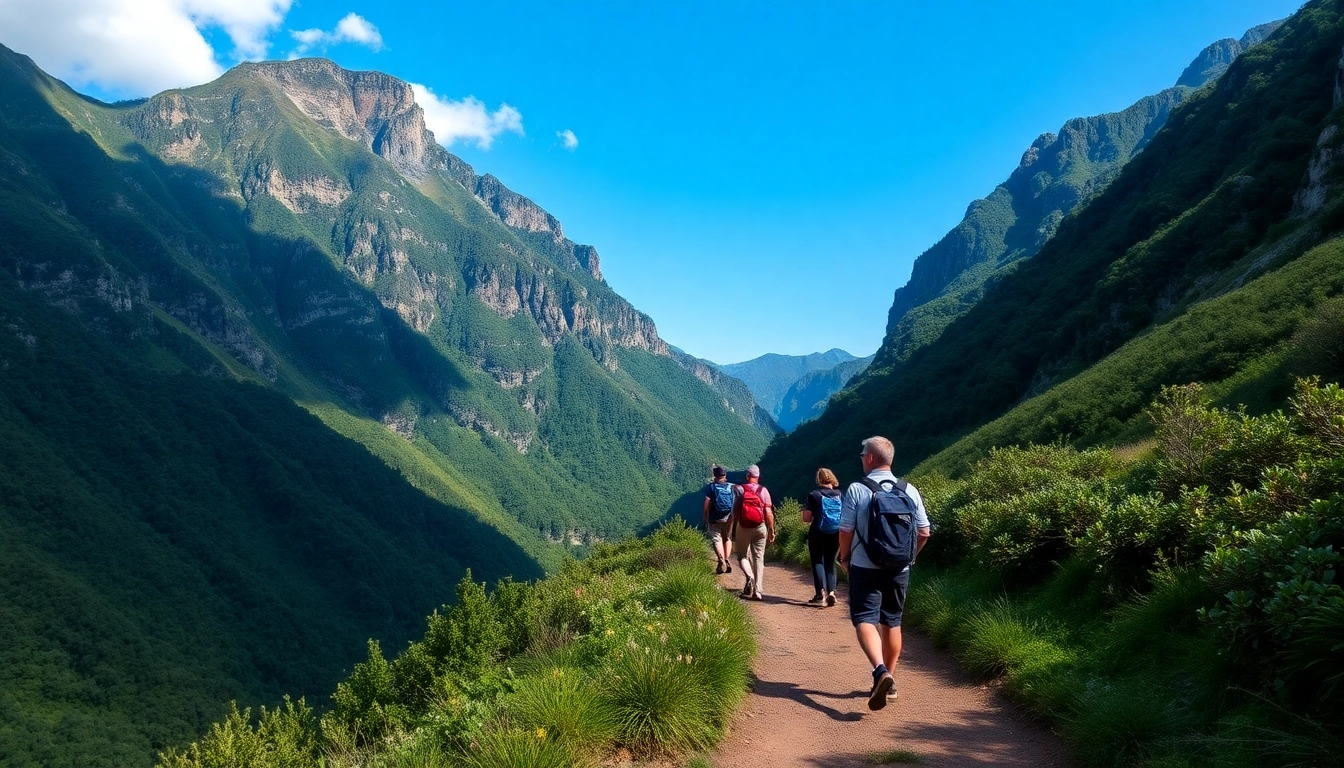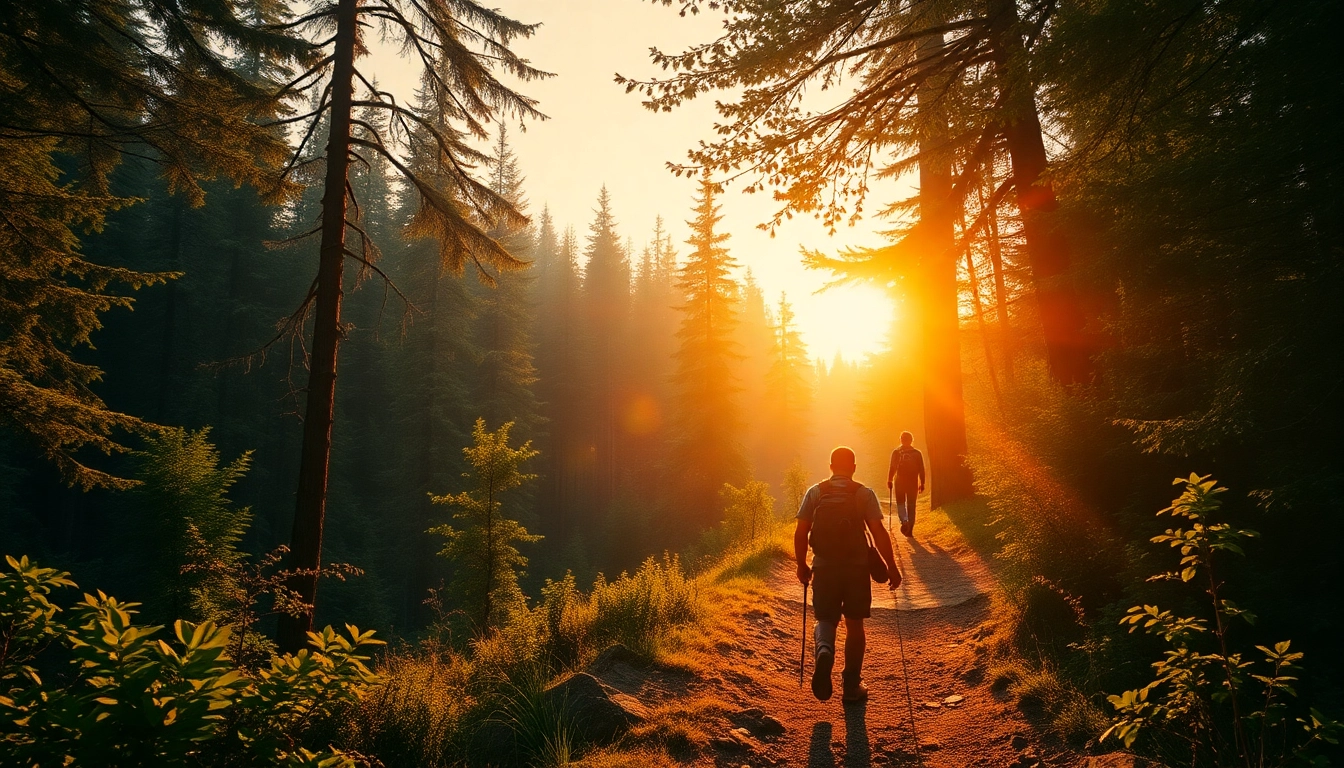Understanding Guided Treks: What Sets Them Apart
Definition and Key Features of a Guided Trek
A guided trek is an immersive journey through natural landscapes that is led by seasoned experts who share their extensive knowledge and experience throughout the expedition. Unlike independent hiking or self-guided adventures, guided treks provide participants with professional guidance, logistical support, and expert insights, transforming a physical challenge into an educational and enriching experience.
At its core, a guided trek involves a carefully curated route, often through remote or challenging terrains, with a guide who is responsible for navigation, safety, and storytelling. The guiding professional is typically well-versed in the geography, flora, fauna, cultural history, and safety protocols pertinent to the region. This educational component enriches the trek, allowing adventurers to deepen their understanding of the environment they traverse.
Popular features of a guided trek include:
- Expert leadership by experienced guides
- Pre-arranged logistics and accommodations
- Comprehensive safety measures and emergency preparedness
- Educational commentary and storytelling
- Support for different fitness levels with tailored routes
For those interested in exploring Indonesia’s diverse landscapes, such as the volcanic terrains of Lombok, a guided trek offers a safe, informative, and memorable way to connect with nature and local culture. Learn more about the advantages of choosing a guided experience at guided trek.
Benefits of Choosing Expert Guides
Opting for a guided trek led by seasoned professionals confers numerous advantages that significantly enhance the trekking experience. These benefits go beyond mere navigation, contributing to safety, cultural understanding, and overall enjoyment.
1. Safety and Risk Management
Expert guides possess deep knowledge of the terrain, weather patterns, and potential hazards. They are trained to manage emergencies, administer first aid, and adapt routes in response to unforeseen circumstances. This expertise minimizes risks and ensures trekkers are protected throughout the journey.
2. Navigational Accuracy and Local Knowledge
Professional guides are familiar with the intricacies of the region’s trails, including less-known paths and shortcuts, ensuring a smooth and efficient trek. Their understanding of local geography and reliance on GPS or traditional navigation techniques guarantees accuracy, especially in unfamiliar or complex terrains like volcanic slopes or dense forests in Lombok.
3. Cultural and Environmental Enrichment
Guides can share insightful tales about local customs, history, and traditions, offering a richer cultural context. They also educate trekkers on environmental preservation, fauna, and flora, fostering respectful and sustainable tourism practices.
4. Personalized Support and Enhanced Experience
Whether a beginner or an experienced trekker, guides tailor their approach to match participants’ skill levels and interests. They provide motivation, encouragement, and assistance, turning challenging segments into rewarding milestones.
5. Logistical Convenience and Time Efficiency
Guides handle permits, accommodations, meals, and transportation arrangements. This comprehensive planning allows trekkers to focus solely on enjoying the experience without logistical worries.
Overall, choosing expert guides transforms a potentially daunting adventure into an accessible and enriching journey, ensuring safety, learning, and fun at every step.
Popular Types of Guided Trekking Adventures
Guided treks come in many forms, suited to diverse interests, fitness levels, and cultural curiosities. Here are some of the most sought-after categories:
1. Mountain Trekking
These treks involve ascents and descents in high-altitude regions, such as Indonesia’s Mount Rinjani or the Himalayan ranges. They often include multi-day camping and acclimatization strategies, guided by specialists familiar with mountain safety.
2. Jungle and Rainforest Expeditions
Exploring dense tropical forests, these adventures blend adventure with biodiversity education. Guides introduce trekkers to endemic species, medicinal plants, and ecological challenges.
3. Cultural and Heritage Trails
These treks focus on immersing travelers in local traditions, historic sites, and indigenous communities. Guided cultural treks often include visits to remote villages, temples, and markets.
4. Wildlife and Safari Treks
Combining trekking with wildlife observation, these adventures are curated for nature enthusiasts eager to see rare species and habitats, with guides providing expert identification and conservation insights.
5. Custom and Private Treks
Tailored to individual preferences, time constraints, and fitness levels, private guided treks offer flexibility, personalized itinerary design, and exclusive experiences.
Planning Your Guided Trek in Indonesia
Selecting the Right Tour for Your Fitness Level
Careful assessment of your physical condition and trekking experience is vital when choosing a guided adventure. Indonesia offers diverse options, from light cultural walks to strenuous mountain ascents, such as the Mount Rinjani trek.
Beginners or those with limited hiking experience should prioritize shorter, flatter routes with manageable daily distances. Guides often recommend acclimatization days and easier trail segments to prevent fatigue or altitude sickness.
Experienced trekkers seeking challenge can opt for multi-day routes with elevation gains, rugged terrain, or technical sections, always under the supervision of guides trained for such conditions.
When selecting a tour, inquire about the physical demands, daily distances, altitude, and support facilities. An honest self-assessment ensures a safe, enjoyable experience and lays the foundation for a successful adventure.
Best Time of Year for Trekking in Lombok
The climate significantly influences trekking conditions. In Lombok, the dry season from April to October presents optimal weather — clear skies, minimal rain, and moderate temperatures — ideal for mountain hikes and outdoor activities.
The wet season, from November to March, tends to bring heavy rain, fog, and unstable weather, which can complicate trekking plans and increase risks of landslides or trail erosion. However, shoulder months like April and October often strike a balance, with fewer crowds and good weather.
Planning your guided trek during these periods maximizes safety, comfort, and scenic beauty. Local guides and tour operators closely monitor weather patterns and will advise on the best windows for each specific route.
Essential Preparations and Packing Tips
Proper planning is crucial for a successful trek. Key preparations include physical training, acquiring the right gear, and understanding logistical requirements.
- Physical Training: Build endurance through cardio exercises, strength training, and practice hikes to prepare your body for prolonged exertion.
- Gear and Clothing: Invest in high-quality hiking boots, moisture-wicking clothing, layered outfits for temperature variation, and rain protection. Don’t forget a hat, sunglasses, and sunscreen.
- Essential Items: Pack a lightweight backpack, sufficient water bottles, navigation tools, first aid kit, insect repellent, and energy snacks.
- Documentation & Permits: Ensure all required permits are obtained in advance, and carry proper identification and health documentation.
- Health & Safety: Consult with a healthcare provider about vaccinations or medications needed for the region, and inform your guide of any medical conditions.
Adequate preparation not only enhances safety but also boosts confidence, allowing you to fully enjoy the journey through Indonesia’s spectacular landscapes.
Top Destinations and Trails for Guided Treks in Lombok
Mount Rinjani Trekking Routes
Mount Rinjani, Indonesia’s second-highest volcano, stands as a crown jewel for trekkers. Its complex volcanic landscape includes crater lakes, hot springs, and lush forests. Guided treks typically span 2 to 4 days, with routes such as the Senaru and Sembalun trails accommodating various fitness levels.
The ascent requires acclimatization and proper gear, but guides ensure safety while sharing fascinating geological insights. Reaching the summit, at 3,726 meters, offers breathtaking panoramic views and a sense of achievement.
Lombok’s Hidden Waterfalls and Forest Trails
Beyond Rinjani, Lombok boasts an array of lesser-known treks through pristine rainforests, leading to stunning waterfalls like Tiu Kelep and Sendang Gila. Guided hikes here are less technically demanding yet equally captivating, perfect for families or less experienced hikers.
These trails often include opportunities for bird watching, swimming in natural pools, and exploring local villages, providing deep cultural immersion and ecological appreciation.
Customized Guided Tours for Unique Experiences
For travelers seeking personalized adventures, many tour operators in Lombok offer tailored itineraries combining mountain, jungle, and cultural components. Such trips can include overnight stays in traditional Sasak villages, cooking classes, or visits to sacred sites, ensuring an authentic and memorable experience.
Ensuring Safety and Sustainability on Guided Treks
Guidelines for Responsible Trekking
Sustainable trekking emphasizes respecting local cultures, conserving the environment, and supporting local communities. Always stick to designated trails, avoid littering, and minimize noise pollution to prevent ecological disturbance.
Engage with local guides and businesses that prioritize eco-friendly practices and fair employment. Recognizing and honoring local customs fosters mutual respect and enriches your experience.
Working with Reputable Local Guides and Companies
Choosing reputable operators is critical. Research reviews, certifications, and affiliations with conservation organizations. Well-established guides adhere to safety standards, possess valid permits, and promote responsible tourism.
Environmental Impact and Preservation Initiatives
Many regions in Lombok and Indonesia as a whole actively promote conservation through trail maintenance, wildlife protection, and eco-certifications. Supporting these initiatives by participating in organized clean-up efforts or donating can help preserve these natural wonders for future generations.
Enhancing Your Trekking Adventure with Local Culture
Immersive Cultural Experiences During Guided Tours
Indonesia’s rich cultural tapestry offers countless opportunities for meaningful engagement. Guided treks often include stops at traditional villages, ceremonial sites, and markets where you can observe local artisans, listen to traditional music, and learn about indigenous customs.
Supporting Local Communities and Eco-Tourism
Sustainable tourism thrives when travelers consciously support local artisans, stay in community-run accommodations, and participate in cultural workshops. This helps generate income and empowers communities to preserve their heritage.
Authentic Food, Customs, and Traditions to Discover
Embrace local cuisine by tasting authentic dishes prepared by community members. Engage with local traditions like jewelry making, dance performances, or traditional ceremonies, which are often included in guided cultural treks. These interactions deepen your understanding and appreciation of Indonesia’s diverse cultures.

